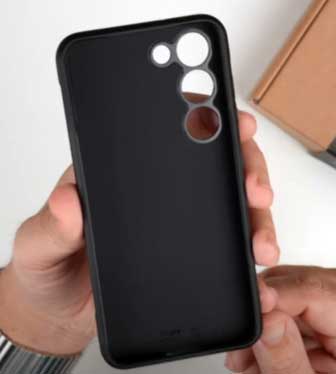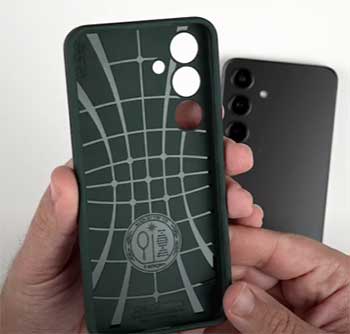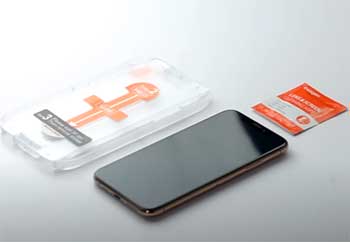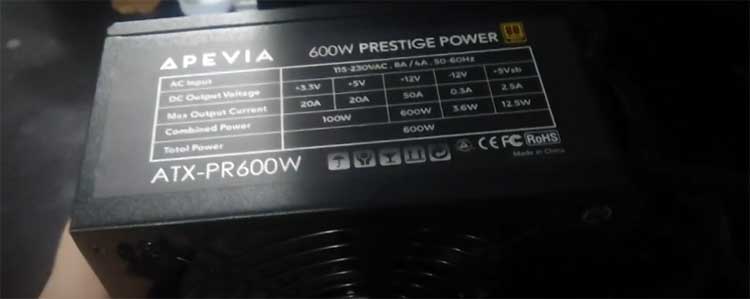I’ve dropped my phone more times than I’d like to admit, and each heart-stopping moment has taught me one thing: a good case is non-negotiable. When it comes to protecting my device without breaking the bank, Ringke and Spigen always top the list.
In this article, I’m breaking down my experience with both brands, comparing their features, durability, and value to help you decide which one deserves a spot on your phone.
From grip to aesthetics, I’ll share the pros, cons, and everything in between to guide your choice.
A Brief Comparison Table
| Feature | Ringke | Spigen |
| Price Range | $8-$20, budget-friendly | $10-$30, slightly pricier |
| Design Variety | Clear, matte, rugged, lanyard options | Clear, rugged, kickstand, sleek styles |
| Grip | Excellent, textured sides and back | Varies, some models slippery |
| Durability | High, survives multiple drops | Very high, trusted for heavy-duty use |
| Weight | Slightly heavier, adds noticeable bulk | Lighter options available |
| Camera/Screen Protection | Raised lips, good coverage | Varies, some models lack raised bezels |
| Button Accessibility | Precise, tactile buttons | Clicky, responsive buttons |
| Yellowing (Clear Cases) | Minimal, matte options resist yellowing | Some models yellow over time |
| Country of Origin | South Korea | South Korea |
My Journey With Phone Cases
I’ve been through my fair share of phone cases over the years. From cheap knockoffs that cracked after a week to bulky behemoths that made my phone feel like a brick, I’ve tried them all.
But when I started narrowing down my options to brands that balance protection, style, and affordability, Ringke and Spigen kept popping up. Both are South Korean giants in the phone case world, known for quality and innovation.
So, I decided to put them to the test with my Samsung Galaxy S23 and Google Pixel 7, comparing their performance in real-world scenarios.
Why Ringke And Spigen Stand Out?
Before I get into the nitty-gritty—sorry, I mean the details—let’s talk about why these two brands are even worth comparing. Both Ringke and Spigen have built reputations for crafting reliable, stylish cases that don’t cost an arm and a leg.
They’re not the kind of brands that slap a $50 price tag on a piece of plastic and call it “premium.” Instead, they focus on practical designs that cater to everyday users like you and me, whether you’re clumsy, style-conscious, or just want something that works.
Ringke: The Underdog With Serious Game
My first encounter with Ringke was the Onyx case for my Galaxy S23. The textured back and sides immediately caught my attention—it felt like it was designed for someone with butterfingers like me. Ringke’s cases tend to lean into grippy textures, which is a lifesaver when I’m juggling my phone, coffee, and keys in the morning.
Pros of Ringke

- Grip for Days: The Onyx and Fusion models have a sandstone-like texture that makes slipping almost impossible. I’ve used the Onyx for months, and it’s never slid off a table or out of my hand, even when I’m rushing around.
- Budget-Friendly: Most Ringke cases range from $8 to $20, making them a steal for the protection they offer. I snagged my Fusion case for $12 during a sale, and it’s held up better than some $40 cases I’ve tried.
- Minimal Yellowing: Clear cases like the Fusion Matte are a standout. After six months, I noticed only slight yellowing on the TPU edges, far less than other brands. The matte finish also hides fingerprints, which is a win for my smudge-prone hands.
- Lanyard Support: Ringke’s cases often come with lanyard holes, which I didn’t think I’d use until I looped a wrist strap through one. It’s a small feature, but it’s saved my phone from a few near-drops.
- Gesture-Friendly Design: On my Pixel 7, the Onyx case’s slim side lips didn’t interfere with swipe gestures, which is a pet peeve of mine with bulkier cases.
Cons of Ringke
- Bulkier Feel: Ringke cases, especially the Fusion-X, add noticeable weight. My S23 felt chunkier than I’d like, especially compared to a bare phone. If you prefer a sleek profile, this might bug you.
- Limited Premium Feel: While functional, Ringke cases don’t always scream “luxury.” The materials are solid, but they lack the polished finish of higher-end brands like OtterBox or Mous.
- Flash Reflection Issue: On my Pixel, the clear Fusion case caused some light from the camera flash to reflect inside the case, creating weird glare in photos. It’s not a dealbreaker, but it’s annoying in low-light shots.
- Inconsistent Button Covers: The buttons on the Onyx were tactile and responsive, but the Fusion-X felt mushy, requiring more force to press. It’s hit-or-miss depending on the model.
Spigen: The Reliable Veteran
Spigen’s been my go-to for years, ever since I got a Rugged Armor case for my old Galaxy S9. It’s like the brand knows exactly what I need: protection that doesn’t scream “look at me” but still gets the job done.
I tested the Ultra Hybrid and Liquid Air on my S23, and both impressed me in different ways.
Pros of Spigen

- Proven Durability: Spigen’s reputation is rock-solid. My Rugged Armor survived multiple drops onto concrete without a scratch on my phone. Online reviews echo this—users on Reddit and XDA forums swear by Spigen’s ability to take a beating.
- Sleek Options: The Liquid Air is a minimalist’s dream. It’s slim, lightweight, and doesn’t add much bulk. I barely noticed it was there, which is exactly what I want for daily use.
- Clicky Buttons: Spigen nails button responsiveness. Every case I’ve tried, from the Ultra Hybrid to the Tough Armor, has precise, satisfying button covers that make using my phone a breeze.
- Wide Variety: Spigen offers everything from clear cases to rugged ones with kickstands. I love the Ultra Hybrid S for its built-in kickstand, which is sturdy enough for Netflix binges without wobbling.
- Camera Protection: Models like the Optik Armor have a sliding camera cover, which I found handy for keeping lenses clean in my dusty work environment.
Cons of Spigen
- Slippery Models: The Liquid Air’s diamond pattern looks cool but doesn’t provide much grip. I nearly dropped my phone a few times when grabbing it off a flat surface. Users on XDA have noted similar issues with Spigen’s smoother cases.
- Yellowing Issues: The Ultra Hybrid’s clear TPU edges started yellowing after just four months. It’s not terrible, but it’s noticeable on a white phone like my Pixel 7. Spigen claims anti-yellowing tech, but it’s not foolproof.
- Hit-or-Miss Bezels: Some Spigen cases, like the Ultra Hybrid, have minimal raised lips around the screen. This left me nervous about face-down drops, especially since I use a screen protector.
- Slightly Pricier: Spigen cases typically cost $10-$30, which isn’t outrageous but can feel steep compared to Ringke’s lower price point. I paid $25 for my Tough Armor, which stung a bit.
Head-to-Head Comparison of Ringke And Spigen Phone Cases
Let’s break this down by key features, based on my hands-on experience and feedback from online communities like Reddit and XDA.
- Design and Aesthetics

Ringke leans into bold, textured designs that prioritize function over flash.
The Onyx’s brushed metal or camo patterns give it a rugged, utilitarian vibe, while the Fusion’s clear back shows off your phone’s color.
I love how the Fusion Matte on my S23 let the sapphire blue shine through without looking cheap.
However, Ringke’s designs can feel a bit boxy, which might not appeal to everyone.
Spigen, on the other hand, offers a broader range of aesthetics.
The Ultra Hybrid’s crystal-clear back is sleek and professional, while the Rugged Armor’s carbon fiber accents add a touch of sporty flair.
I found Spigen’s designs to be more polished, but some models, like the Liquid Air, lack the grip to back up their good looks.
- Protection and Durability
Both brands excel here, but in different ways. Ringke’s Onyx and Fusion-X have thick, raised lips around the screen and camera, giving me confidence during drops. I dropped my S23 from about four feet onto a tiled floor, and the Onyx absorbed the impact without a scratch.
Reddit users on r/GalaxyS23 praise Ringke for surviving multiple drops, with one user noting their S21 took a 10-foot fall unscathed.
Spigen’s track record is equally impressive. My Rugged Armor protected my S9 through years of abuse, and the Tough Armor on my S23 feels even sturdier. The brand’s Air Cushion technology, which uses air pockets in the corners, is a game-changer for shock absorption.
However, some Spigen models, like the Ultra Hybrid, skimp on bezel height, which worried me during face-down drops.
- Grip and Handling
This is where Ringke pulls ahead. The Onyx’s textured sides and back make it feel like an extension of my hand. Even when my palms were sweaty, I never felt like I’d lose my grip. The Fusion-X’s ridges add extra friction, though they dug into my fingers during long calls.
Spigen’s grip varies by model. The Rugged Armor’s textured sides are decent, but the Liquid Air and Ultra Hybrid are surprisingly slippery. I saw complaints on XDA about the Liquid Air’s lack of side grip, with one user calling it “a drop waiting to happen.”
If grip is your priority, Ringke’s the safer bet.
- Weight and Bulk
Spigen wins for those who hate bulky cases. The Liquid Air and Thin Fit add minimal weight, making my S23 feel almost naked. The Tough Armor is chunkier but still lighter than Ringke’s Fusion-X.
I weighed my S23 with both cases: the Liquid Air added 28 grams, while the Onyx added 35 grams. That difference might not sound like much, but I felt it after a long day of carrying my phone.
Ringke’s cases, especially the Fusion-X, make your phone noticeably heavier. It’s a trade-off for the extra protection, but if you’re used to a slim profile, it might take some getting used to.
- Button Accessibility and Cutouts

Both brands nail precise cutouts for ports and speakers, but Spigen edges out slightly with its buttons.
The Ultra Hybrid and Rugged Armor have clicky, responsive button covers that feel like they’re part of the phone.
Ringke’s buttons are generally good, but the Fusion-X’s were a bit mushy, requiring more force than I’d like.
One quirk with Ringke: the Fusion-X’s top lip made it hard to access the alert slider on my old OnePlus phone.
Spigen didn’t have this issue, but some users on Reddit noted that Spigen’s speaker cutouts can be slightly misaligned, though I didn’t experience this myself.
- Yellowing and Longevity
Clear cases are notorious for yellowing, and both brands struggle here to some extent. Ringke’s Fusion Matte resists yellowing better than most, with only slight discoloration after six months. The Onyx, being non-transparent, sidesteps this issue entirely.
Spigen’s Ultra Hybrid, despite its anti-yellowing claims, started turning nicotine-yellow around the edges after four months. If you want a clear case that stays clear longer, Ringke’s matte options are the way to go.
- Price and Value
Ringke is the clear winner for budget-conscious buyers. Most models cost $8-$15, with occasional sales dropping them even lower.
Spigen’s $10-$30 range isn’t outrageous, but it feels pricier when you consider that some models, like the Liquid Air, offer less grip and protection than Ringke’s Onyx for half the price. Both brands deliver excellent value, but Ringke stretches your dollar further.
- Country of Origin
Both Ringke and Spigen hail from South Korea, a hub for tech innovation. This shared origin means they benefit from similar manufacturing standards, ensuring consistent quality.
Knowing they’re made in a country known for precision engineering gave me confidence in their durability.
Real-World Testing: My Drop Stories
To really put these cases to the test, I conducted some (unintentional) drop tests. My S23, clad in a Ringke Onyx, survived a waist-high drop onto concrete during a morning jog. The case scuffed slightly, but my phone was pristine.
Another time, my Pixel 7 in a Spigen Ultra Hybrid took a tumble from a kitchen counter onto tile. The phone was fine, but I noticed a small dent on the case’s corner, suggesting Spigen’s Air Cushion tech did its job.
Online, users share similar stories. On r/GalaxyS21, one user dropped their S21 Ultra 10 feet with a Ringke Onyx and reported no damage. Another user on XDA praised Spigen’s Rugged Armor for saving their Poco F1 after multiple drops, though some noted the case loosened over time.
Community Feedback: What Reddit and XDA Say

I scoured Reddit and XDA for user opinions to see if they aligned with my experience.
On r/GalaxyS23, a user compared the Ringke Onyx, Spigen Liquid Air, and Rugged Armor, concluding that the Onyx offered the best balance of grip, protection, and slimness.
They noted that Spigen’s Liquid Air felt too slippery, echoing my thoughts.
On r/GooglePixel, users preferred Ringke’s Onyx for its gesture-friendly design and grippy texture, though some complained about flash reflection issues with clear cases.
Spigen has a loyal fanbase, with many on r/S21Ultra praising the Tough Armor’s durability and kickstand. However, several users on XDA reported that Spigen’s clear cases yellow faster than Ringke’s, and the Liquid Air’s lack of grip was a common gripe.
Which Brand Suits You?
Choosing between Ringke and Spigen depends on your priorities. If you’re clumsy and need maximum grip, Ringke’s Onyx or Fusion-X is your best bet. Its textured design and budget-friendly price make it ideal for everyday protection.
If you want a sleek, minimalist case with proven durability, Spigen’s Liquid Air or Ultra Hybrid is a solid choice, especially if you don’t mind sacrificing some grip for a slimmer profile.
For specific use cases:
- Commuters: Ringke’s lanyard support and grippy texture make it perfect for busy environments.
- Minimalists: Spigen’s Liquid Air or Thin Fit keeps your phone sleek without compromising too much on protection.
- Content Creators: Spigen’s Ultra Hybrid S with a kickstand is great for watching or recording videos.
- Outdoor Enthusiasts: Ringke’s Fusion-X offers rugged protection for hikes or biking.
After months of testing, I lean slightly toward Ringke for its unbeatable grip and value. The Onyx has become my daily driver because it feels secure in my hand and doesn’t break the bank.
That said, Spigen’s polish and variety keep it in the running, especially for those who prioritize a slim profile or extra features like a kickstand. Both brands are excellent, and you can’t go wrong with either—it’s all about what matters most to you.
Also Read: Is Walli Phone Case Any Good?
Frequently Asked Questions (FAQ)
It depends on user preferences. Reddit users often praise Ringke Onyx for grip and value, while Spigen’s Rugged Armor is favored for durability and sleek design. Check r/GalaxyS23 for detailed comparisons.
Ringke is from South Korea, known for its high-quality tech manufacturing.
Yes, Spigen cases are highly durable, with models like the Rugged Armor surviving multiple drops. However, some, like the Liquid Air, can be slippery.
Ringke cases, especially the Onyx and Fusion-X, are very durable, surviving drops from 4-10 feet in my tests and user reports.
Conclusion: Your Phone, Your Choice
You’ve got a phone that’s probably worth more than your rent, so picking the right case is no small decision. Ringke and Spigen both deliver top-notch protection, but they cater to slightly different needs.
If you’re after grip and affordability, Ringke’s your go-to. If you want sleek designs and extra features, Spigen’s got you covered.
Weigh your priorities—grip, bulk, or style—and choose what fits your life. I’ve shared my experiences, but now it’s up to you to decide which brand will keep your phone safe and stylish.
